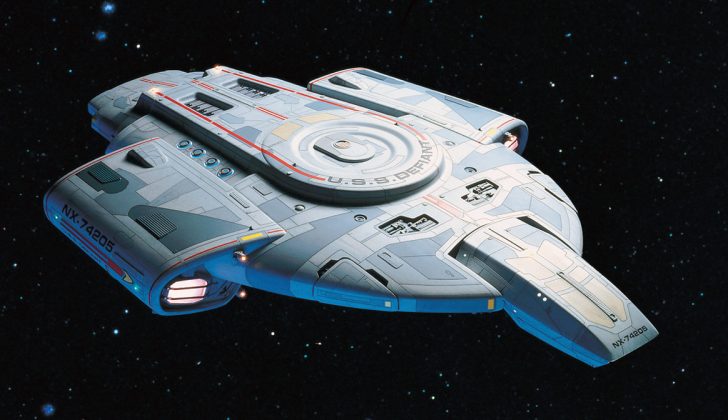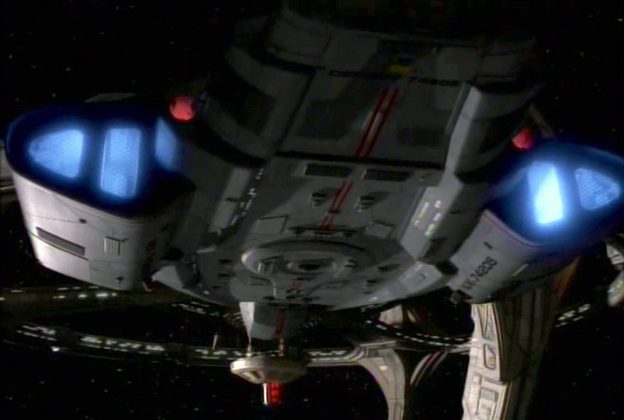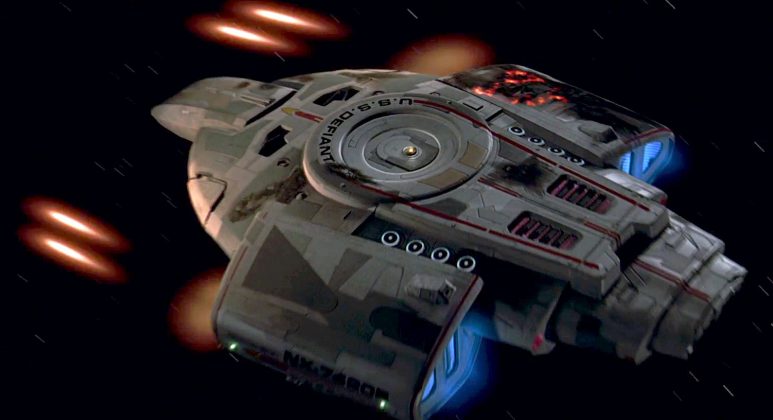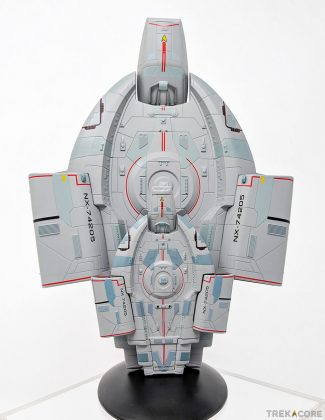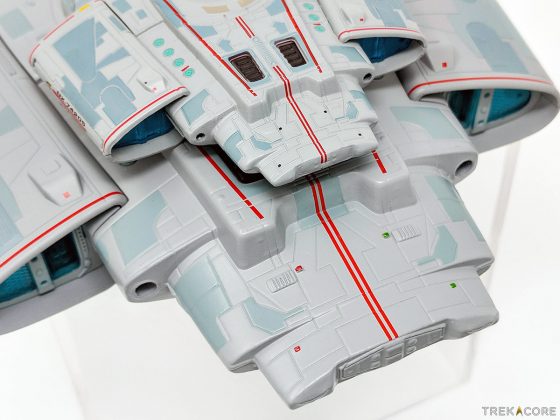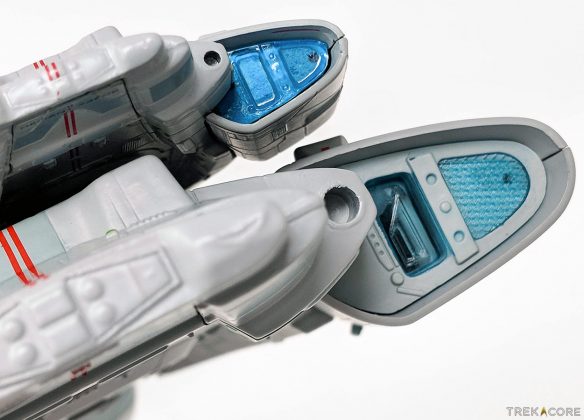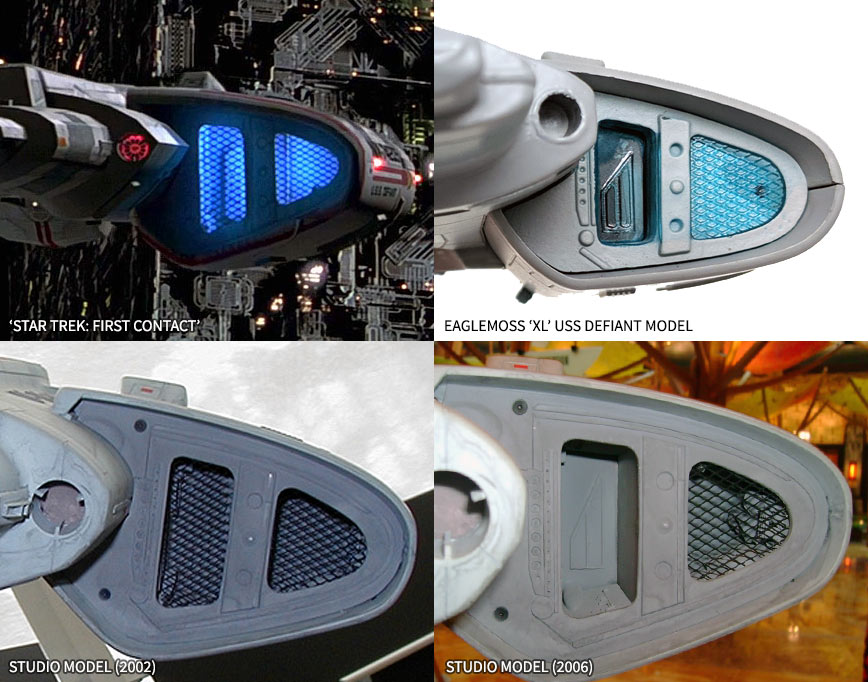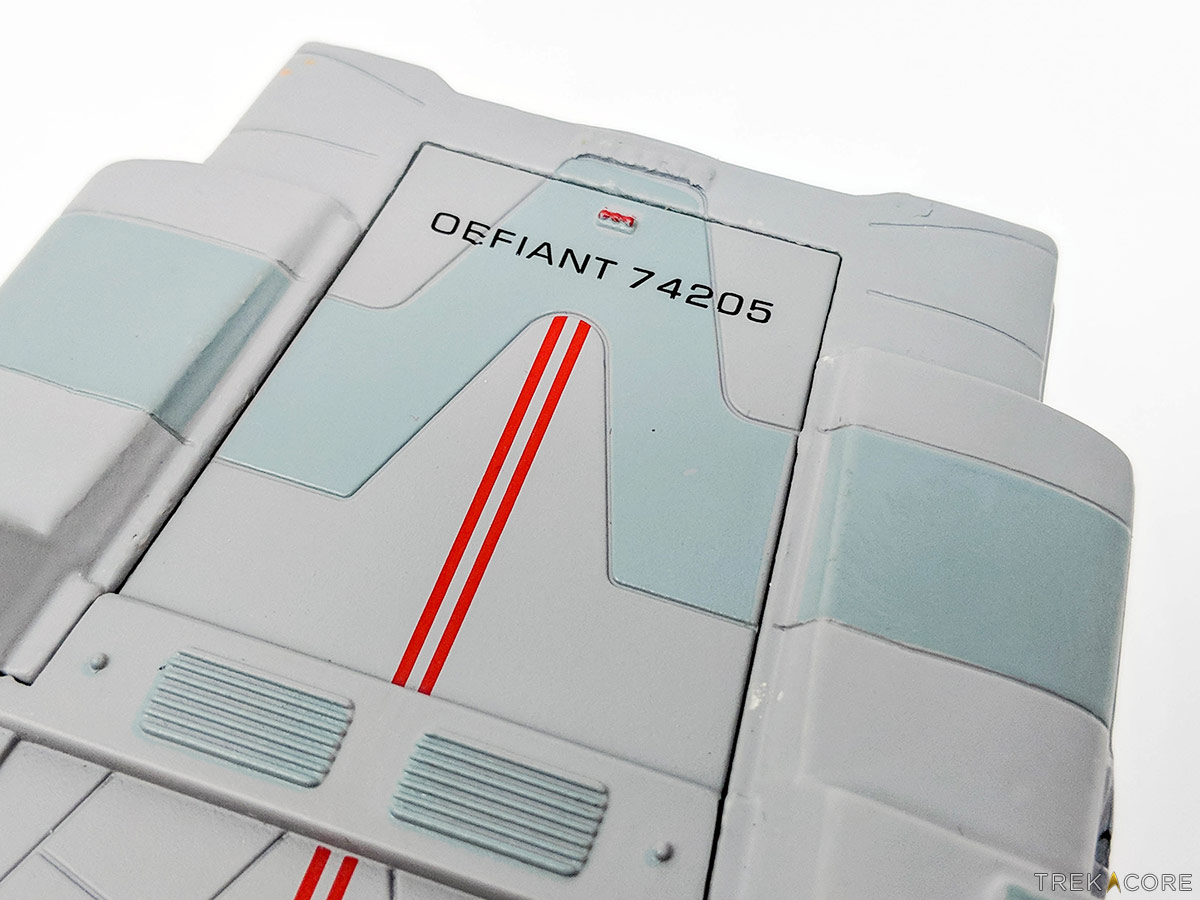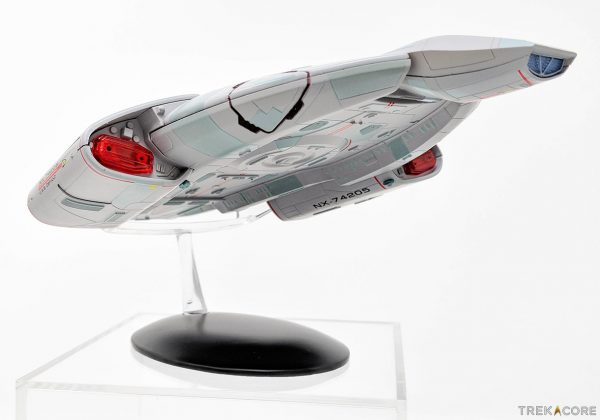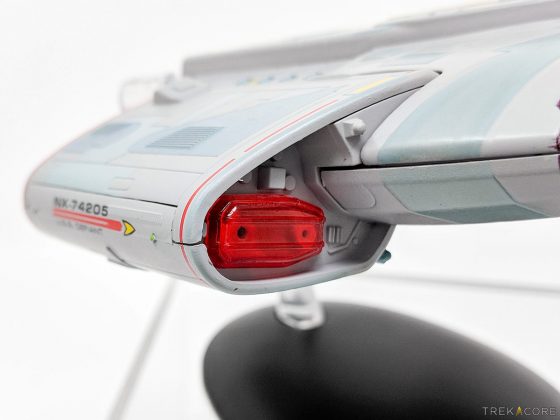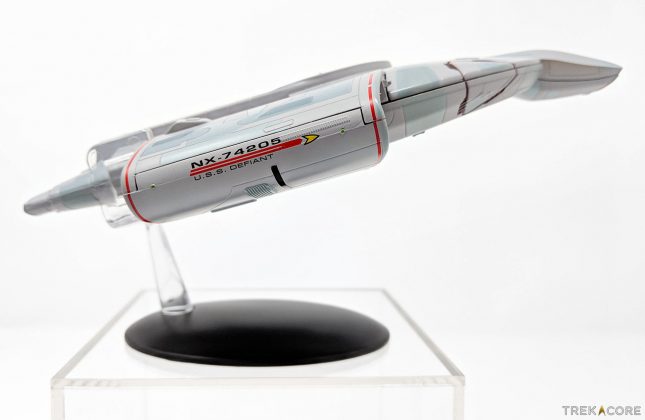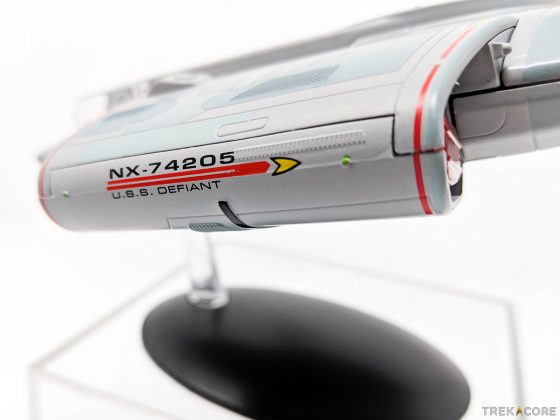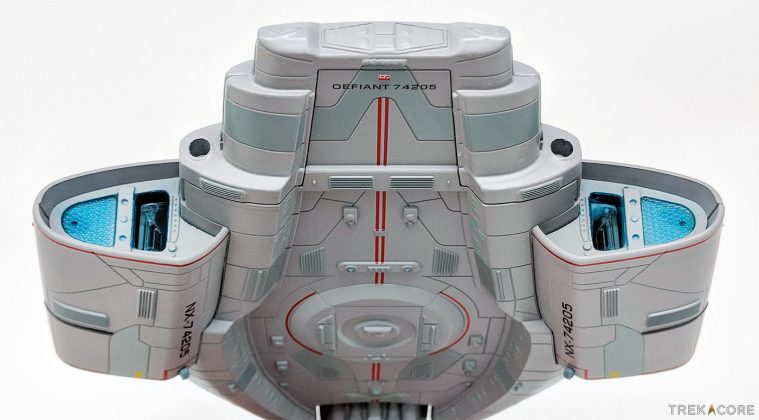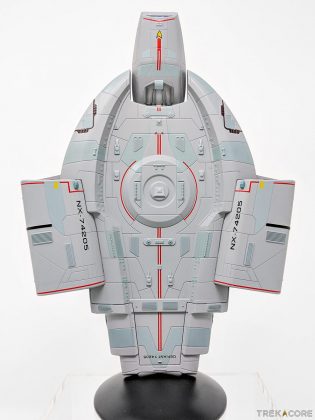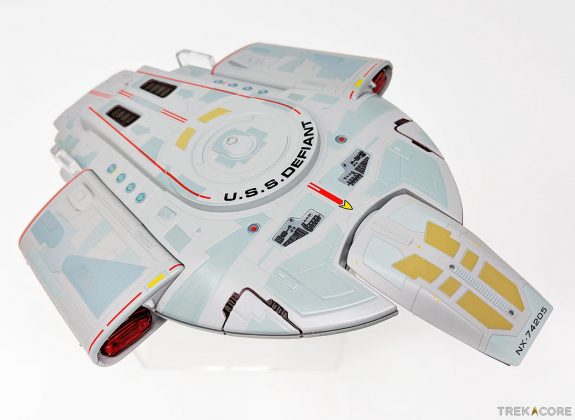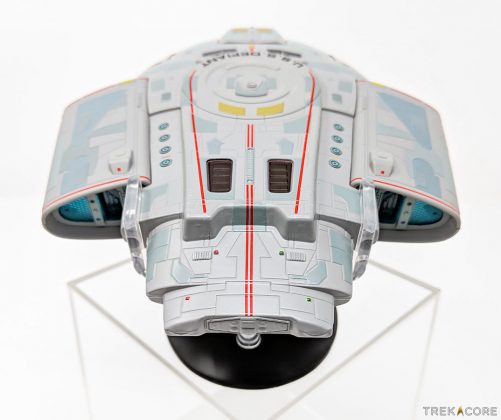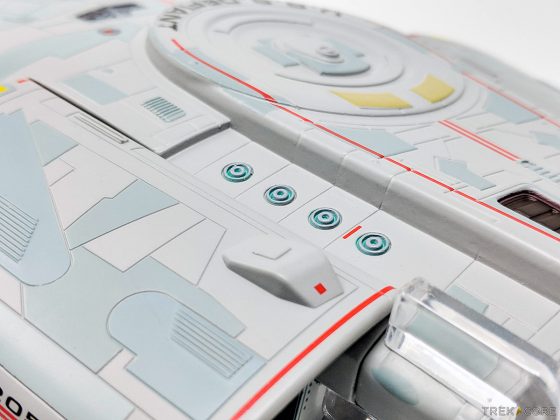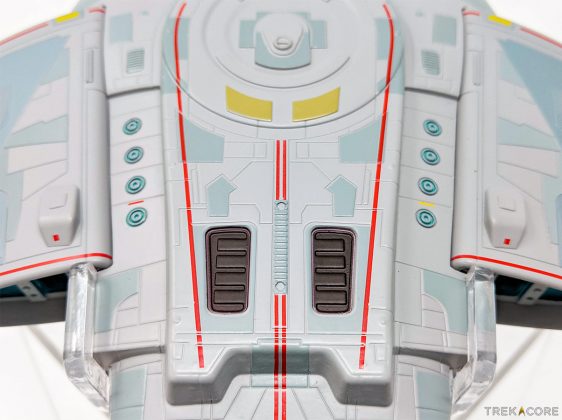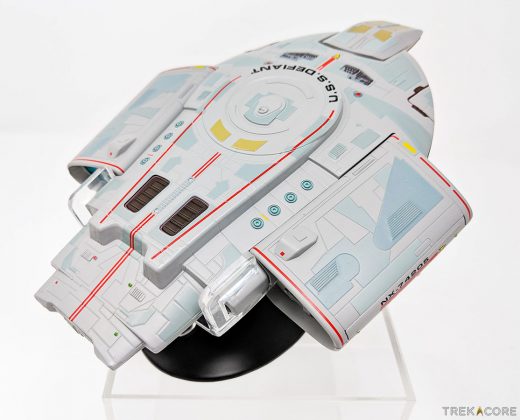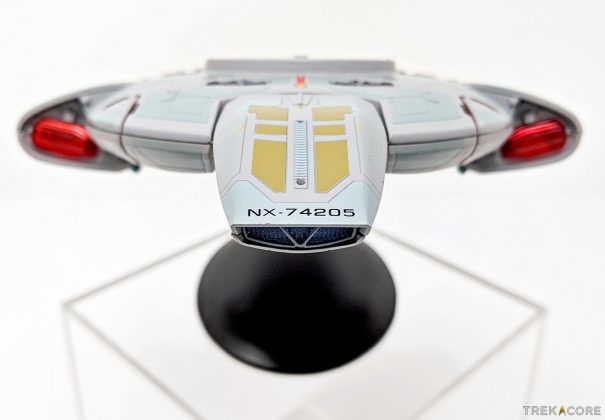Eaglemoss has kicked off their appearance at San Diego Comic Con with the release of the newest ship in their XL Starships fleet, Captain Sisko’s USS Defiant (NX-74205) from Star Trek: Deep Space Nine — a larger and (mostly) more-refined edition of the model released in 2013.
Appearing throughout five seasons of Deep Space Nine and making a cameo appearance in Star Trek: First Contact, the Defiant is one of the more unique Federation starship designs, with its low-profile, unibody shape perfect for combat missions from the Gamma Quadrant to Sector 001.
Compared to the smaller 5″ version of the Defiant that Eaglemoss put out back in late 2013, the new XL Defiant feels enormous: measuring it at almost 9″ in length, this is a real beast of a model, and one that definitely benefits from the larger scale.
Hull plating, warp nacelles, the deflector assembly — nearly every aspect of the model’s construction features more detail and greater texture than the smaller edition, thanks to the larger surface area — and side-by-side, the two ships almost appear as parent and child.
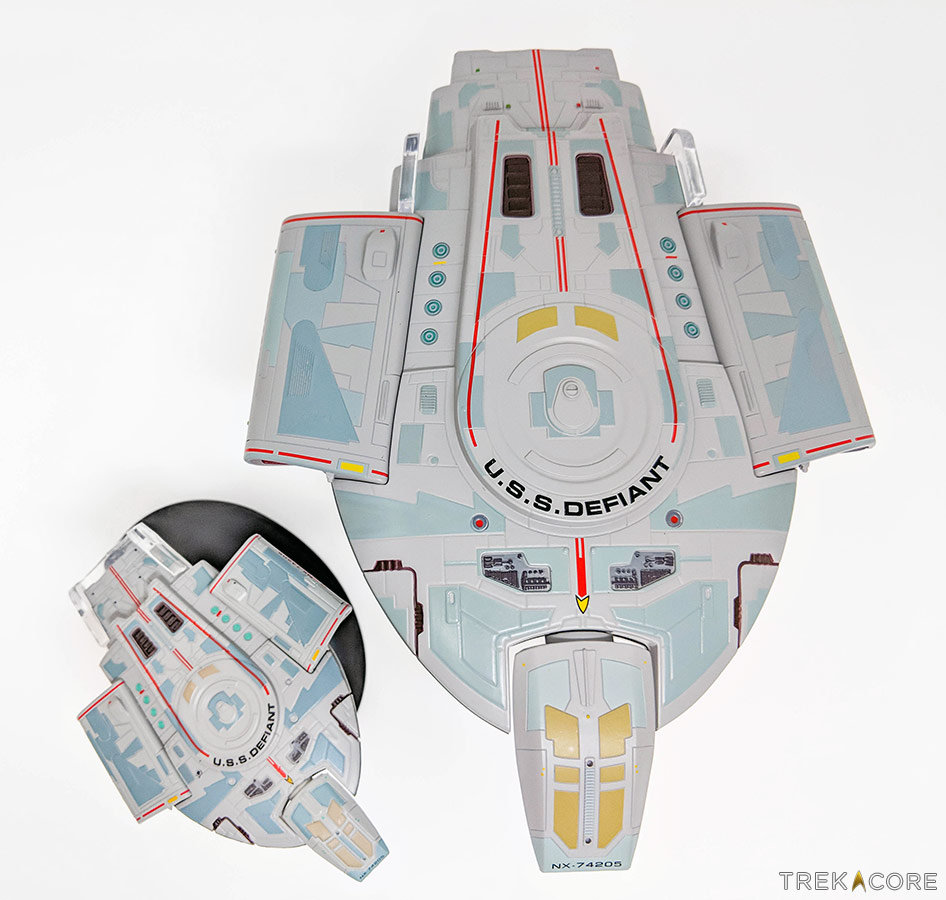 One thing you may notice right away is the revised color scheme on the larger Defiant, deepening the gold panels on the deflector module and lightening the blue areas around the surface of the ship.
One thing you may notice right away is the revised color scheme on the larger Defiant, deepening the gold panels on the deflector module and lightening the blue areas around the surface of the ship.
While the hull paneling color palette still isn’t totally accurate to the filming model — which included dark gray accents on the nacelles (rather than medium blue) — it’s closer than the original model’s hue.
The Defiant filming model was an odd one, in that the ship’s coloring could appear different depending on the lighting it was photographed in (as you can see in this photo gallery), so aside from the grey nacelle panels we don’t have much to quibble about here.
The biggest differences between the two Defiants are the deflector and warp nacelles, which have each received newly-designed plastic inserts. The disappointing streak of blue paint on the 2013 edition has been upgraded to a wonderfully-detailed and textured deflector screen, which gives the XL model life just missing from the small edition.
On the rear of the warp nacelles, the one-piece sky-blue engine grille has been replaced by a more accurate two-piece insert, correcting a complaint about the smaller version of the ship. The new engine cover isn’t quite totally screen-accurate, however, as both the left and right side of the plastic should feature the ‘grille’ pattern seen on the outer plastic piece.
The Defiant studio model suffered some damage over the years, with the grille insert that was in place inside the smaller engine openings broken and removed from the large model by the time it reached the Christie’s auction in 2006 — and the model seems to be based upon reference photos taken at that time.
While it’s accurate to the model as it appeared during its final public display, it’s not entirely aligned to the on-screen appearance of the ship — but it’s certainly a step up from the 2013 model design, and this minor detail is not a dealbreaker for this reviewer.
It would have been nice, however, to see the red impulse engines marked in color.
In terms of the physical build of the Defiant model, it’s constructed from the usual mix of plastic and metal; while the top of the ship is die-cast metal, the underside as well as the attached nacelles and deflector are all plastic pieces.
While they’re certainly attached securely, the size of the model really makes the lightweight, hollow nacelles noticeable when you pick up the ship — they just feel like the empty shells they are. That being said, this model is meant to be a display piece, not a toy for play, so it’s not any issue in that regard.
The forward deflector assembly, however — while still looking just fine when on display — has a very small attachment point to the metal body of the ship, and can become unstuck from its fixed position with a minimum of pressure applied to it.
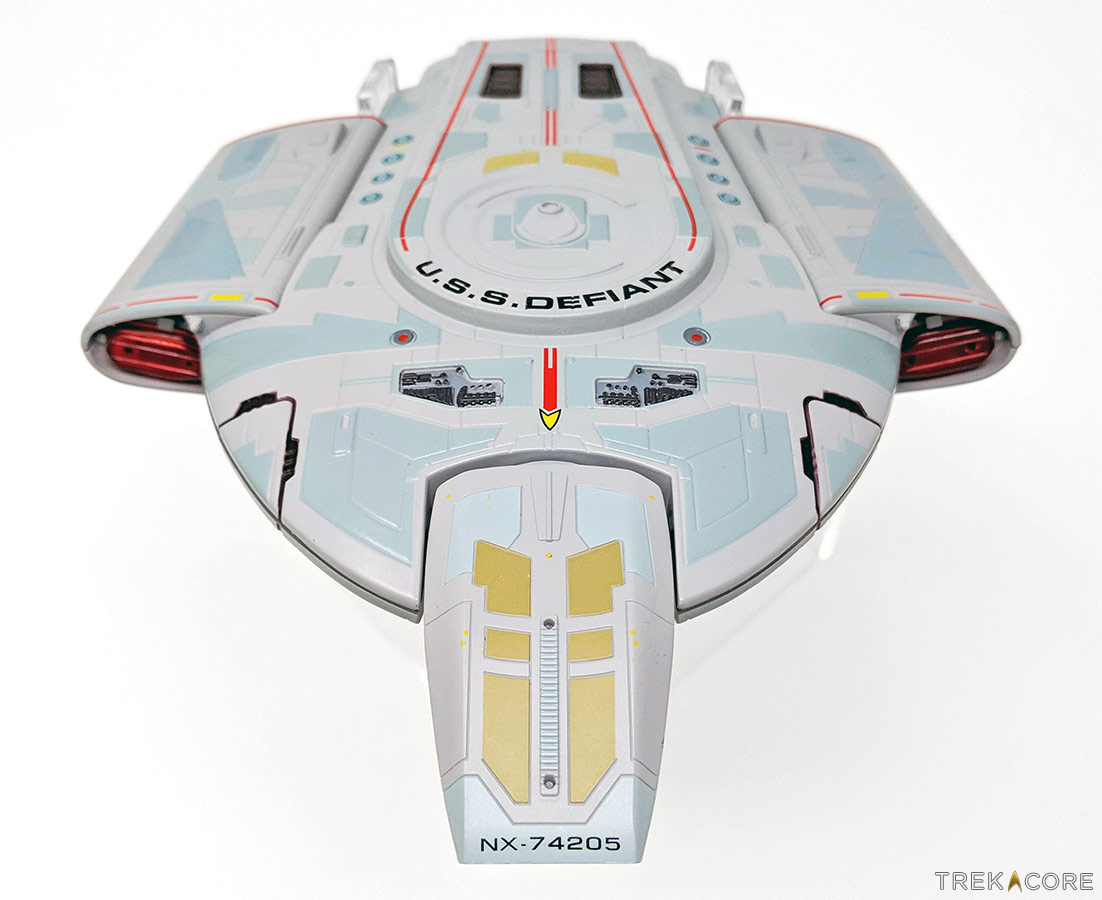 This is simply a casualty of the mixed-material construction of these models, since the deflector is attached to the metal body with a set of pressure clips, and not a ‘solid’ seam or adhesive bond. If you happen to knock the piece out of position while moving the model around, a tiny dab of glue will lock it in place.
This is simply a casualty of the mixed-material construction of these models, since the deflector is attached to the metal body with a set of pressure clips, and not a ‘solid’ seam or adhesive bond. If you happen to knock the piece out of position while moving the model around, a tiny dab of glue will lock it in place.
Again, it needs repeating that this in no way impacts the look of the ship when on display — several of the photos in this review were taken when our review model had a ‘loose’ deflector pod.
While the underside of the Defiant has nicely-molded details in the plastic base — including a series of windows with a well-aligned paint application, hooray! — there is one registry marking that is just baffling in its existence: the DEFIANT 74205 tail marking doesn’t actually use the letter “D”, but instead has a capital “O” as the first letter in the text.
Granted, it’s in a spot virtually impossible to see when the ship is on display (so it’s not really an in-your-face kind of thing), but this is just the most basic of all errors that can be made. If you’re making a starship model, the name needs to be spelled correctly on the ship.
Here’s several more images of the XL USS Defiant model for your examination:
While some early subscribers to the XL Starships program are already starting to receive their models, if you are a collector who buys Eaglemoss’ models one at a time can order the USS Defiant from their web shop (for $74.99 in the US and £49.99 in the UK).
It will also be available for purchase at the company’s SDCC booth this week, and at STLV in Las Vegas in early August.
![]()
We’ll be back with our review of Eaglemoss’ next Star Trek model release, the redesigned Klingon Bird of Prey from Star Trek: Discovery, next week!

